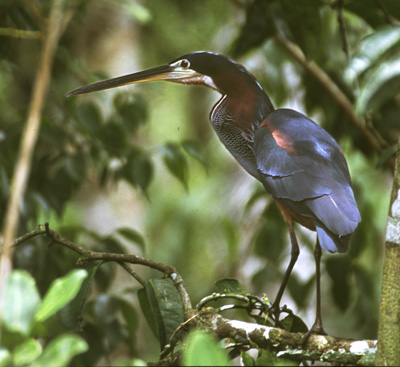Facts About Agami heron
The Agami Heron, also known as the Chestnut-bellied Heron, is a striking bird native to Central and South America. In Brazil, it is often referred to as "Soco beija-flor" due to its unique and beautiful coloration. This medium-sized heron stands about 66-76 cm tall and is easily identifiable by its chestnut-colored belly, iridescent green wings, and delicate pale blue feathers on its crown and back. Unfortunately, the species is classified as vulnerable by the IUCN, primarily due to ongoing habitat destruction.
These herons thrive in swampy forests, mangroves, forest streams, and freshwater wetlands, ranging from Mexico to Brazil. They typically nest in colonies, often in shrubs and trees over water, and some of these colonies can host hundreds of nests. Their diet mainly consists of fish, frogs, small reptiles, and snails, which they hunt in shaded, forested aquatic environments.
The Agami Heron is somewhat reclusive, preferring the cover of shade, making it a rare sight. When they communicate, they produce various sounds and tend to respond to disturbances either by rattling or by slowly walking away. During courtship, notable color changes occur in their facial patches, accompanied by displays of a silver crest.
Conservation efforts for the Agami Heron are challenging due to its elusive nature and the limited scientific knowledge about the species. Protecting their nesting sites and conducting further research on their habitat needs and behaviors are critical steps to ensure their survival.

 Guatemala
Guatemala